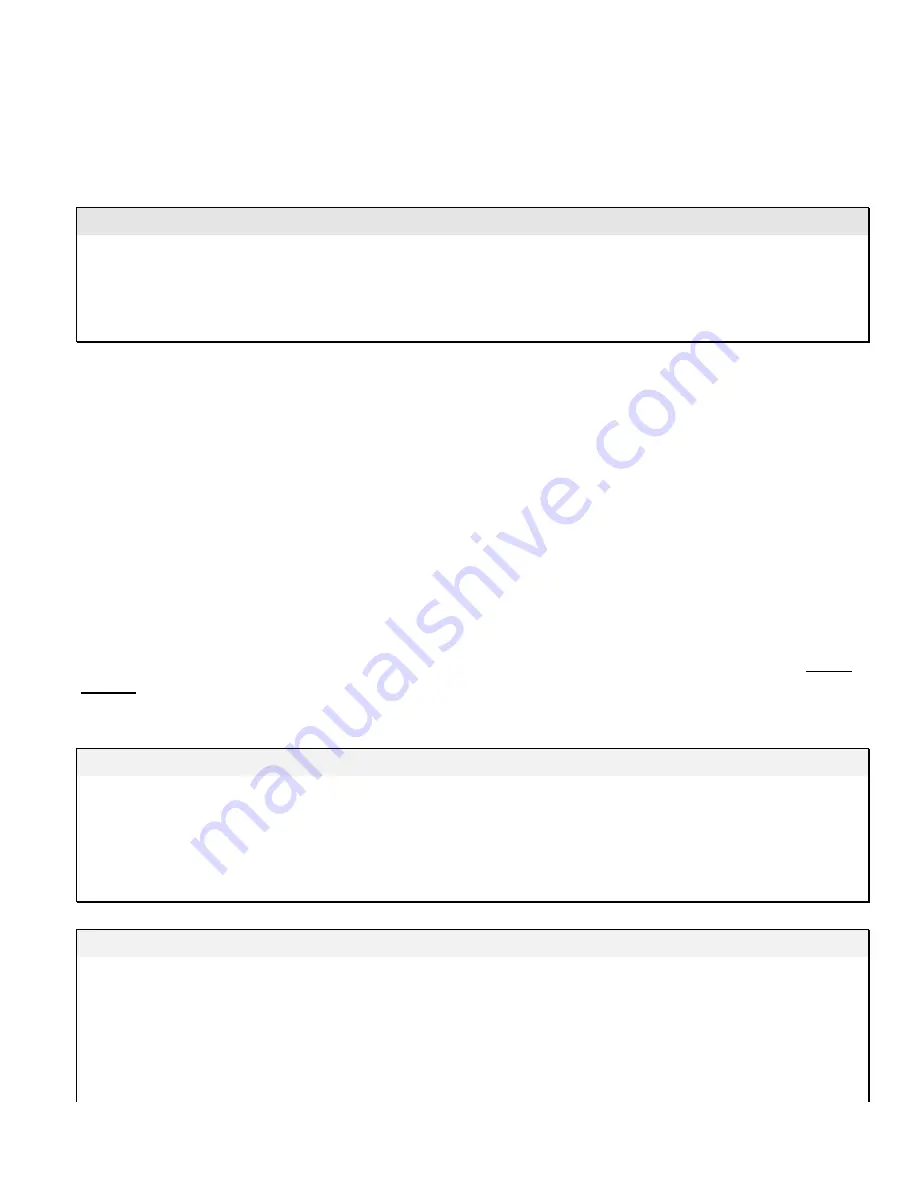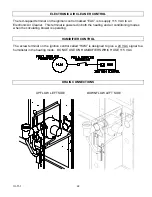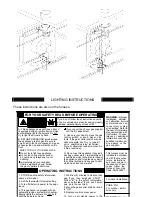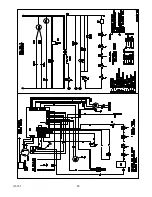
IO-151
11
The circulating air supply may be taken from; 1) Outside the building, 2) return ducts from several
rooms, 3) central return, 4) any combination of the above.
When a cooling coil is not installed it is recommended that the supply duct have an access panel
so the heat exchanger can be viewed. This panel shall be of sufficient size to permit the entrance
of a light or probe to assist in the observation of the heat exchanger integrity or sampling the air
stream. It should be sealed to prevent air leakage during normal operation.
CAUTION
DO NOT
take return air from bathrooms, kitchens, furnace rooms, garages, utility/laundry rooms
or cold areas. If outside air is utilized it should not be taken from within 10 feet of an appliance
vent outlet, a vent opening or a plumbing drainage system, or the discharge from an exhaust
system unless the outlet is three (3) feet above the outside air inlet.
DO NOT
take return air from
areas where it can pick-up objectionable odors, fumes or flammable vapors.
Note: When a combination of outdoor and indoor air is utilized the system should be designed
and adjusted such that the temperature reaching the appliance will not drop below 50
o
F during
heating operation. This will minimize the possibility of condensate forming inside the heat
exchanger. When this type of system is utilized the volume of air must not be reduced.
Plenum chambers and air ducts must be installed in accordance with the Standard for the
Installation of Air Conditioning and Ventilating Systems, NFPA #90A, or the Standard for the
Installation of Warm Air Heating and Air Conditioning Systems, NFPA # 90B.
If installed in parallel with a cooling unit the damper or other means used to control the flow of air
must be adequate to prevent chilled air from entering the furnace, and if manually operated must
be equipped with means to prevent operation of the other unit unless the damper is in the full heat
or cool position.
NOTE: UPON INITIAL START-UP SOME SMOKE OR AN ODOR MAY BE PRESENT. THIS IS
NORMAL AND SHOULD DISAPPEAR IN A SHORT AMOUNT OF TIME.
IT IS RECOMMENDED
THAT WINDOWS AND DOORS BE OPENED UPON INITIAL START-UP TO VENT THIS
NON-
TOXIC
SMOKE.
CAUTION
One of the most common causes of problems, including premature heat exchanger failure, in a
forced air heating system is insufficient return air. The return air connections to the furnace should
be approximatly equal to the area of warm air discharge. Consult local codes for specific
requirements. The blower speed should be adjusted to maintain the temperature rise range
shown on the rating plate.
The total static pressure should not exceed 0.50” W.C.
WARNING
NEVER ALLOW THE PRODUCTS OF COMBUSTION TO ENTER THE RETURN DUCTWORK
OR CIRCULATING AIR SUPPLY. ALL RETURN DUCTS MUST BE ADEQUATELY SECURED
TO THE FURNACE AND COMPLETELY SEALED. ALL OTHER DUCTWORK MUST BE
SECURED WITH APPROVED CONNECTIONS AND SEALED AIRTIGHT. THE VENT AND
COMBUSTION AIR SUPPLY PIPES MUST BE PROPERLY INSTALLED AND SUPPORTED TO
PREVENT LEAKAGE AS NOTED ELSEWHERE IN THESE INSTRUCTIONS. WHEN A
FURNACE IS MOUNTED ON A PLATFORM IT MUST BE SEALED AIRTIGHT BETWEEN THE











































